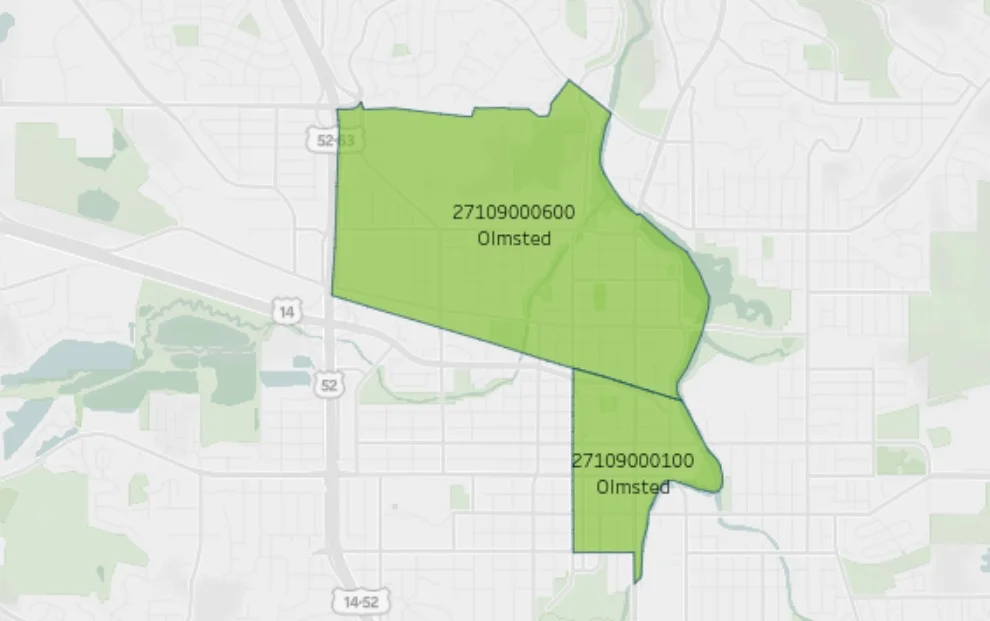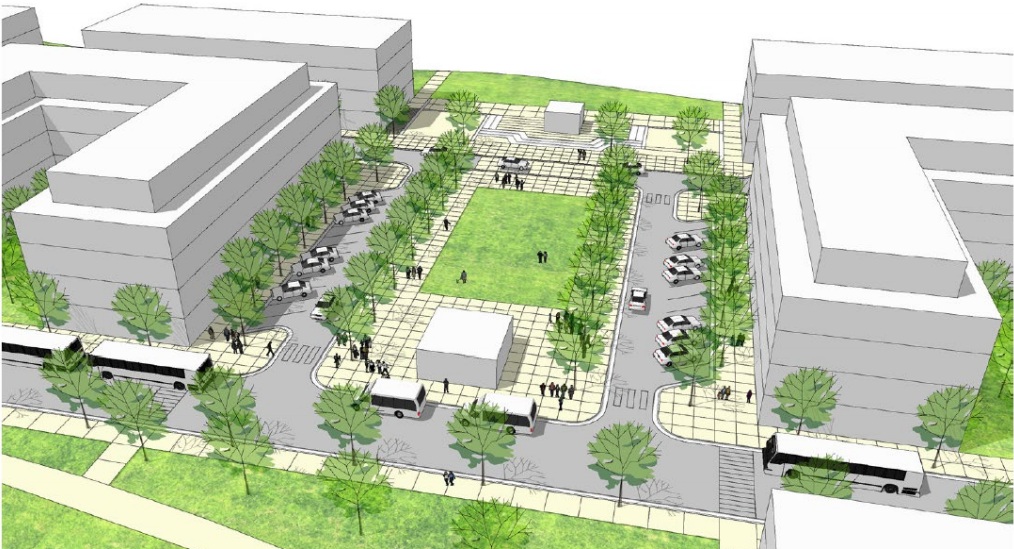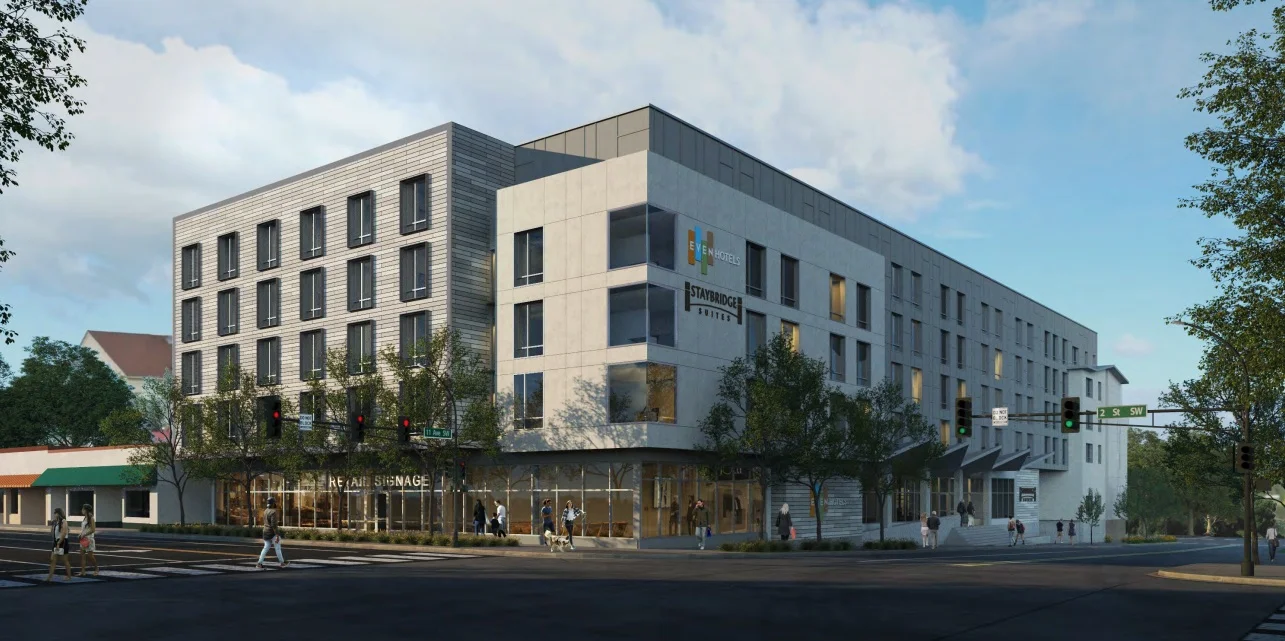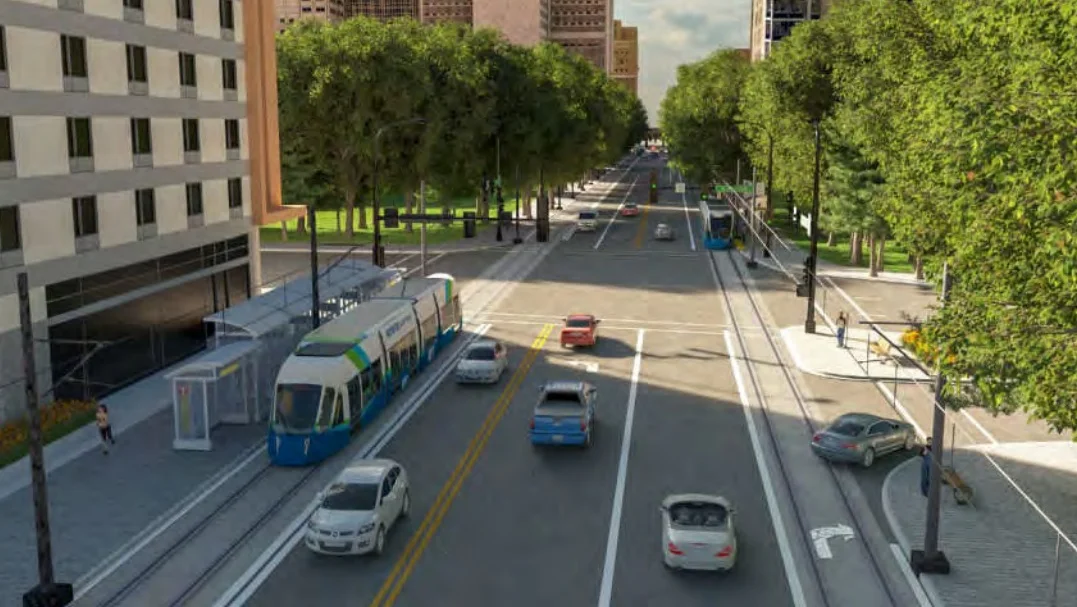How DMC projects can cash in on a federal program meant for poor areas
An area already ripe for redevelopment could become even more attractive to investors thanks to a federal program designed to spur commercial activity in economically-distressed parts of the country.
Rochester’s central business district — from Civic Center Drive down to Soldiers Field — is one of 128 areas in Minnesota listed as an Opportunity Zone by the state Department of Employment and Economic Development.
The Opportunity Zone program, which came out of the 2017 federal tax law, provides incentives for developers willing to invest in low-income communities across the country.
On paper, the idea is to infuse capital into neighborhoods that missed out on the economic recovery and are struggling with job growth.
In many cases, though, states have begun applying a far looser interpretation to the criteria outlined in the law.
Rather than selecting only the most “distressed communities,” state governments — using the discretion given to them by the federal legislation — have also been designating Opportunity Zones based on pre-existing economic priorities. This means selecting areas near universities, shopping malls, sports stadiums, and in Rochester — well, a hospital.
‘The poster child’
On Thursday, a 172-room hotel became the first development to break ground in Rochester with the support of the Opportunity Zone program. Branded as an upscale Hyatt House, the hotel will offer apartment-style extended stay options for visitors traveling here for the Mayo Clinic.
In an announcement, the development team behind the hotel — PEG Companies and EKN Development Group — credited the Opportunity Zone program for allowing them to move the project forward.
“Rochester Hyatt House could be the poster child of this exciting, innovative program at work,” said Cameron Gunter, the founder and CEO of Utah-based PEG Companies. “Federal policymakers designed the Qualified Opportunity Zone Program to stimulate economic activity across the country — and that’s exactly what you are seeing here.”
Gunter said his firm is operating ahead of the curve. While many real estate developers across the nation are now rushing to identify zones where they can build, he said PEG saw the “merits of the program from its inception.”
By being an early adopter, Gunter and his development partner will be eligible to collect the maximum tax benefit under the law. (In addition to the $3.9 million it will receive in local tax increment financing.)
As Bloomberg reported this past week, investors have until the end of the year to buy into an eligible project if they want to “reap the entire tax bounty.” The deadline is June 29 if they want “to fully use the benefit to shelter last year’s profits from hedge funds and other partnerships.”
The article says that while there was a rush of interest in Opportunity Zones early on, investors are taking a wait-and-see approach to a program that analysts say is one of the biggest tax breaks in decades.
Many investors, Bloomberg notes, are looking for additional guidance from the Treasury Department, which is expected to release rules this month.
Is downtown ‘distressed’?
For critics of the program, inclusion of the $44 million Hyatt House is a textbook case of a well-intentioned idea gone awry.
The location of the development — the former American Legion site at 315 1st Avenue Northwest — is within the boundaries of an already high-demand real estate market flush with tax subsidies.
Just in the past five years, there has been $690 million in private investment linked to Destination Medical Center. The 20-year build-out of Rochester will altogether include $3.5 billion in funding from Mayo, with another $2.1 billion in additional private investment, and $585 million in public support.
Lindsey Meek, former chair of the Planning and Zoning Commission, said the designation of downtown as an Opportunity Zone baffles her.
“I don’t exactly look around my neighborhood and see ‘distressed,’” said Meek, who has lived downtown for the past five years.
A report from the Brookings Institution, a nonpartisan think tank, found that downtown Rochester is far from the only Opportunity Zone in America that does meet one’s standard definition of '“distressed.”
More than a quarter of Opportunity Zones, the report found, were either “not poor, were college campuses, or were areas where no one lived.”
In many of those cases, state governments used loopholes to select sites largely based on the development opportunities they present. The zones are often already rapidly-gentrifying neighborhoods that pose opportunities for new retail centers, hotels, and other commercial projects.
“That’s a problem for the program’s impact; poor geographic targeting reduces the impact of the program and limits the benefits that accrue to poor residents,” the report’s authors wrote. “While federal criteria helped direct state’s choices to relatively disadvantaged places, in some cases states sought loopholes or picked places that did not need the help. "
Adding to the toolbox
The Brookings report came out in 2018 — just a year after the tax law passed Congress — and its authors admit they will not know for some time how the program will play out nationwide.
Whether the program is effective will likely be measured by how many projects go up as a direct result of the program — versus the amount of tax benefits shelled out to projects that were already going to be developed.
Given the discrepancies in how state governments selected their zones, analysts say results could vary significantly state to state.
In Minnesota, the Brookings report found, then-Gov. Mark Dayton’s administration chose the more distressed neighborhoods at least 70 percent of the time — good for the sixth highest ranking in the country.
The list includes some of the poorest areas across the state, including Minneapolis’s Phillips area and the Red Lake Indian Reservation in northwestern Minnesota. It also includes, as the Star Tribune notes, the Mall of America and the area around St. Paul’s new soccer stadium.
Here in Rochester, two Opportunity Zones were selected. In addition to the zone overlapping downtown, the state also picked an area north of Civic Center Drive — from Highway 52 to Silver Lake — that includes a mix of commercial, industrial and residential properties.
The positioning of the two zones provides an additional tool for local officials looking to encourage new construction near the city center. Along with DMC efforts, the city is considering new regulations that would allow for greater housing density and commercial development along transit routes in and out of downtown. In situations where the transit corridors overlap with Opportunity Zones, the city can leverage the program to promote the kind of development outlined in planning documents.
“Opportunity Zones are another arrow in our quiver to attract new investment to Rochester,” said Patrick Seeb, DMC’s director of economic development and placemaking, in a blog post about the program.
Despite skepticism over the implementation of the program, the authors of the Brookings report expect it to remain popular because “the benefits accrue to local projects, and local policymakers can claim credit.”
In other words, even if Opportunity Zones are a collective failure, they could still deliver major benefits to cities on the cusp like Rochester. As a result, local officials are likely to continue touting them whenever possible.
As one local elected official told us, it may be a “ridiculous, poorly thought out program,” but once it became the law of the land, “we implemented the tool in such a way that we could maximize the benefit to our community.”
Follow Sean on Twitter.
Cover graphic: Outline of Rochester’s two Opportunity Zones








